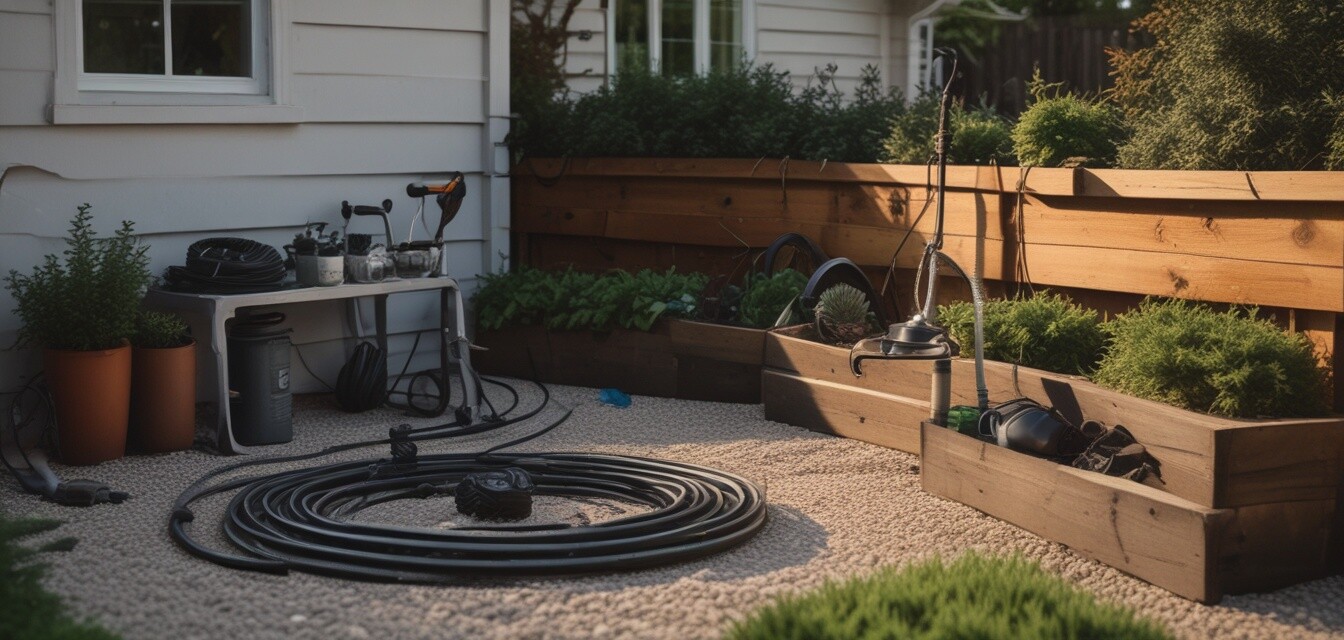
Organizing Outdoor Electrical Cords: Tips for Safety
- Properly managing outdoor electrical cords is crucial for safety.
- Utilizing various organizing tools can help prevent tripping hazards.
- Regular maintenance and checks can ensure the longevity of cords.
- Designate specific storage areas for outdoor cables to prevent clutter.
- Adopt best practices for winding and storing cords effectively.
With the rise of outdoor activities and DIY projects, managing outdoor electrical cords has become more important than ever. Not only does a tidy setup enhance the aesthetic appeal of your outdoor space, but it also plays a crucial role in ensuring safety. In this article, we’ll explore actionable tips on organizing outdoor electrical cords that minimize hazards and keep your area looking great. Let's dive in!
Understanding the Risks
Outdoor electrical cords can pose various risks if not managed properly. Here are a few hazards to keep in mind:
- Tripping Hazards: Loose cords sprawled across walkways can cause falls.
- Weather Damage: Exposed cords can become damaged by moisture and extreme conditions.
- Electrical Hazards: Damaged cords can become shock hazards or lead to fires.
Essential Organizing Tools for Outdoor Cords
To safely and effectively organize your outdoor electrical cords, consider investing in the following tools:
| Organizing Tool | Purpose |
|---|---|
| Cable Clips & Holders | Keep cords securely in place along walls or fences. |
| Cable Organizer Boxes | Store and conceal multiple cords for a neat look. |
| Cable Sleeves & Covers | Protect cords from the elements and wear. |
| Cable Ties & Straps | Bundle cords together to prevent tangling. |
| Weighted Cable Holders | Keep cords grounded to avoid movement. |
Tips for Organizing Your Outdoor Cords
Now that you have an understanding of the risks and tools, here are some practical tips for cord organization:
1. Designate a Specific Storage Area
Choose a spot in your outdoor space where all electrical cords will be kept. This could be a shed, utility box, or a corner of your garage.
2. Use Cable Clips and Holders
Install cable clips along fences or walls to keep wires neatly aligned and off the ground.
3. Properly Winding Cords
Always coil cords in a figure-eight pattern to prevent kinking and tangling. This method helps in ensuring that the cords are easy to unwind and use.
4. Weatherproof Your Cords
Invest in outdoor-rated cords and consider using sleeves or covers to protect them from the elements.
5. Inspect Regularly
Check your cords for any signs of damage or wear regularly. Replacing damaged cords promptly can prevent potential safety hazards.
6. Keep Away From Moisture
If possible, store cords in an elevated area to reduce exposure to water.
Visual Organizing Example
Below is a table showcasing a before-and-after visual representation of organizing outdoor electrical cords:
| Before | After |
|---|---|
Maintenance Tips for Long-Term Organization
To maintain your organized setup, follow these long-term care tips:
- Re-evaluate your storage area every few months to ensure it's still effective.
- Keep labels on storage boxes or containers for easy identification.
- Always return cords to their designated spots immediately after use.
- Consider a routine cleaning schedule to keep your outdoor space tidy.
Conclusion
Organizing outdoor electrical cords is not just about aesthetics; it’s a matter of safety and functionality. By implementing these tips and maintaining a dedicated system, you can significantly reduce hazards while enjoying a more pleasant outdoor experience. Remember, a tidy space promotes not only safety but also enhances your ability to enjoy all your outdoor activities effectively.
Pros
- Significantly reduces tripping hazards.
- Enhances the overall appearance of your outdoor space.
- Increases the lifespan of electrical cords.
- Promotes a safer environment for family and pets.
Cons
- Initial time investment for proper organization.
- Potential costs for purchasing organizing tools.